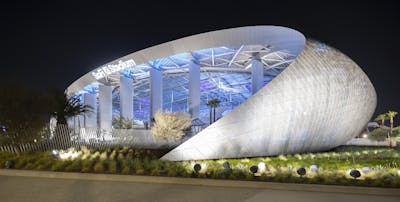
Dirk Kestner PE, LEED AP BD+C, ENV SP, is a Principal and Director of Sustainable Design for Walter P Moore. The following piece is an excerpt from the report, Embodied Carbon: A Clearer View of Emissions.
Overview
“IF YOU CAN’T MEASURE IT, YOU CAN’T IMPROVE IT.”
Peter Drucker’s quote is well known in the business world and is critically important for tracking embodied carbon. A fundamental piece of tracking embodied carbon is using consistent decisions and assumptions for its measurement throughout the material’s lifespan. Relevant life cycle stages include extraction, manufacturing, processing, transportation, construction and installation, maintenance, and demolition, recycling, or end of life.
What is LCA?
Life Cycle Assessment (LCA) is a method of environmental accounting commonly used for assessing environmental impacts associated with all stages of a commercial product, process, or service’s life cycle. When comparing products, it is important that they be functionally equivalent, or that they perform the same function, or functions, and have the same expected life span. LCA is performed per ISO standards to maintain consistency and transparency in the process. LCA can incorporate industry-wide data but becomes increasingly accurate as suppliers provide product-specific data such as processes and fuel sources.
LCA can also be applied to the built environment. When applied to multiple assemblies at the building level, it is referred to as a Whole Building Life Cycle Assessment (WBLCA). Green building rating systems such as LEED and Envision include credits for performing WBLCA and choosing less impactful materials and systems.
Why is LCA important?
As more cities and institutions develop climate action plans, including quantifying embodied carbon reduction or limits as a component of the procurement or permitting process, this conversation has gained significant importance.
LCA allows project teams to make quantitative comparisons based on environmental impacts. In the absence of LCA and WBLCA, teams have compared materials based on attributes, such as their recycled content, which provide general indicators if a product may be environmentally preferable but do not capture the entire picture or allow for robust quantitative comparisons.
In this report, we discuss the use of LCA to measure embodied carbon, the greenhouse gas emissions caused by a building’s material life cycle. LCA allows owners and designers to compare the impacts of a building’s materials to the emissions from the energy consumed during the building’s lifespan. By quantifying the material impacts teams can compare the relative benefits of material versus operational carbon savings in units of carbon. LCA may also be used to quantify other measures of air and water pollution, such as smog, acidification, or eutrophication.
At its simplest, LCA is environmental accounting. You can’t have a budget if you don’t know how to count, and you can’t manage embodied carbon if you don’t perform LCA.


